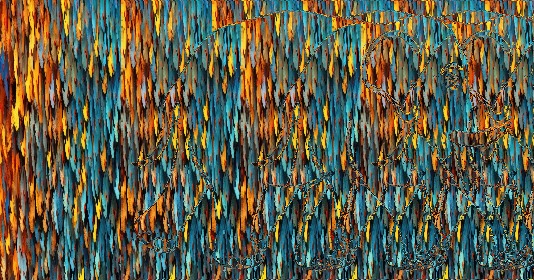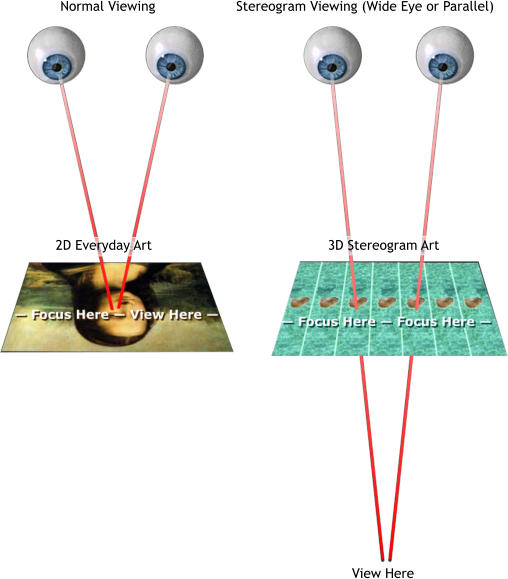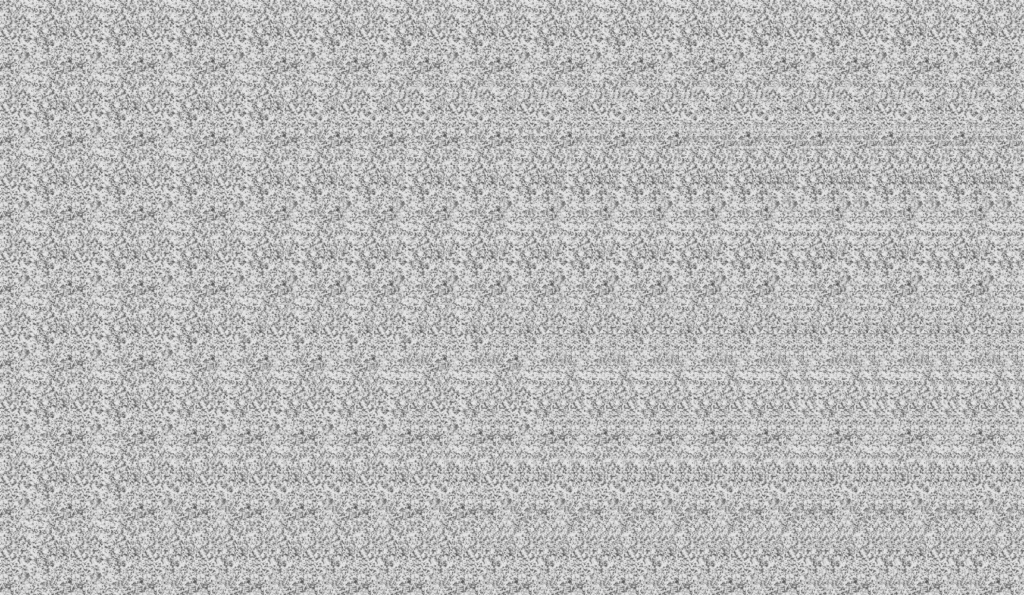Remember those mesmerizing patterns from the 90s that seemed like random dots until suddenly a 3D dolphin or dinosaur emerged? These Magic Eye stereograms captured imaginations worldwide, turning optical illusions into a global phenomenon.

What Are Magic Eye Stereograms?
Stereograms are two-dimensional patterns that reveal hidden three-dimensional images when viewed with the proper eye technique. Magic Eye, the company that popularized these images, transformed simple optical science into an art form that captivated millions.
These images work by repeating patterns at specific intervals, creating depth through the way our eyes process visual information. When viewed correctly, the brain interprets these patterns as having genuine depth and dimension.
How Do Magic Eye Stereograms Work?
Our eyes naturally work together to create depth perception through binocular vision. Stereograms exploit this by presenting slightly different images to each eye. When viewers relax their eyes and look “through” the image, the brain combines these patterns to create a 3D effect.
The process involves either crossing or diverging your eyes until the repeating patterns align. Once aligned, the hidden image emerges from what previously appeared to be chaos.
The History of Magic Eye & Stereograms
Single-image stereograms were first developed by Dr. Bela Julesz in 1959 as a way to study depth perception. In 1991, Tom Baccei and Cheri Smith created the first Magic Eye images, leading to a publishing phenomenon that sold millions of books worldwide.
The technology evolved from simple dot patterns to complex, colorful designs that could hide increasingly sophisticated 3D images. This evolution sparked a cultural phenomenon that peaked in the mid-1990s.
Types of Stereograms & How They Differ
Modern stereograms come in several varieties:
- Autostereograms (Magic Eye style) use repeating patterns to create 3D effects without special equipment
- Random Dot Stereograms employ seemingly random dots to hide complex shapes
- Anaglyph Stereograms require red-blue glasses for viewing
- Computer-Generated Stereograms offer precise control over depth and complexity
How to See Magic Eye Stereograms Easily
Success in viewing stereograms requires proper technique:
- Hold the image at arm’s length
- Focus on a point beyond the image, as if looking through it
- Slowly bring the image closer while maintaining that distant focus
- Wait for the 3D image to emerge – don’t force it
Common mistakes include trying too hard or focusing directly on the pattern. Patience and relaxation are key to success.

Why Some People Can’t See Stereograms
About 5-10% of people struggle with stereograms due to various vision conditions. Strabismus (misaligned eyes) and amblyopia (lazy eye) can affect depth perception, making stereogram viewing difficult or impossible.
Vision therapy exercises can sometimes improve stereogram viewing ability, but success varies by individual.
Psychological & Cognitive Benefits
Regular practice with stereograms offers several benefits:
- Improved eye muscle control
- Enhanced focus and concentration
- Better depth perception
- Reduced eye strain from screen time
- Increased visual processing skills

Fun Facts & Myths
Despite popular belief, almost anyone with normal binocular vision can learn to see stereograms. Contrary to concerns about eye damage, proper viewing actually exercises eye muscles beneficially.
NASA has indeed used stereograms in astronaut testing, as they provide an excellent measure of depth perception and visual acuity in space conditions.
Creating Your Own Stereograms
Modern technology makes stereogram creation accessible to everyone. Software options include:
- Online generators like Easy Sterogram Builder
- Professional tools like 3DMasterKit
- Mobile apps for quick creation
Basic designs can be created using simple pattern repetition, while complex images require specialized software.
Conclusion
Magic Eye stereograms remain a fascinating intersection of art, science, and entertainment. Whether you’re a longtime fan or new to the world of hidden 3D images, these optical illusions offer both entertainment and potential cognitive benefits.
Have you ever successfully seen a Magic Eye image? The journey from confusion to discovery makes mastering these illusions uniquely rewarding.


wonderful submit, very informative. I’m wondering why the
other specialists of this sector don’t understand this.
You must proceed your writing. I’m sure, you’ve a great readers’ base already!
Great info. Lucky me I came across your website by accident (stumbleupon).
I have saved as a favorite for later!
There’s a quiet intensity to this piece that makes it unforgettable. It’s the kind of writing that lingers in your mind long after you’ve put the book down or closed the screen. Every line seems to carry with it an echo — a subtle reverberation that invites further reflection, and that’s a quality not easily found in modern writing.